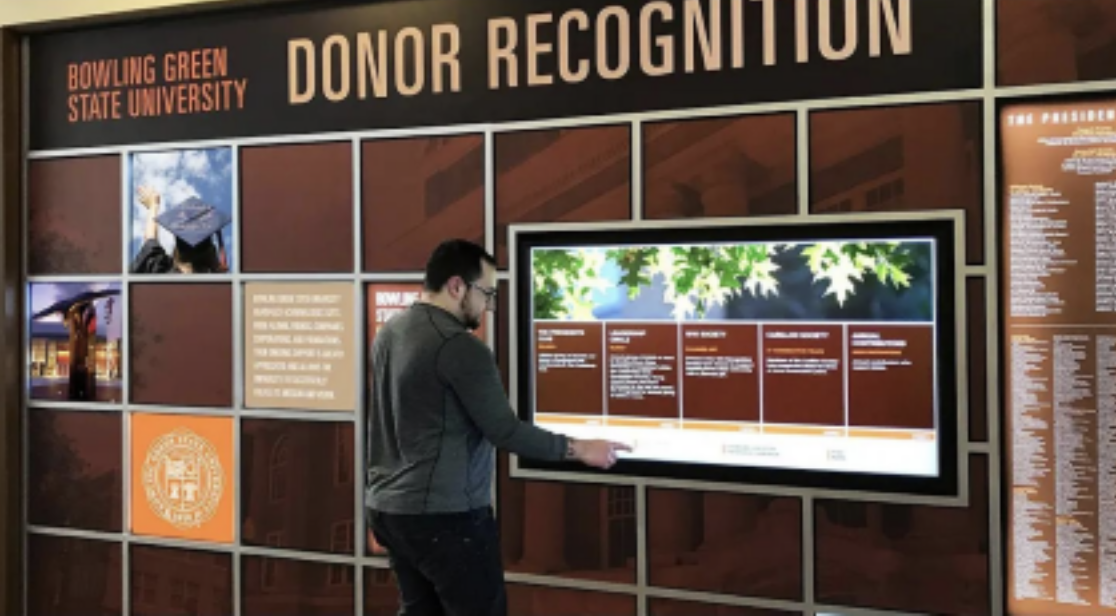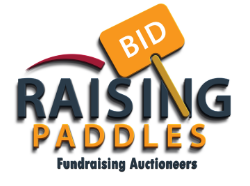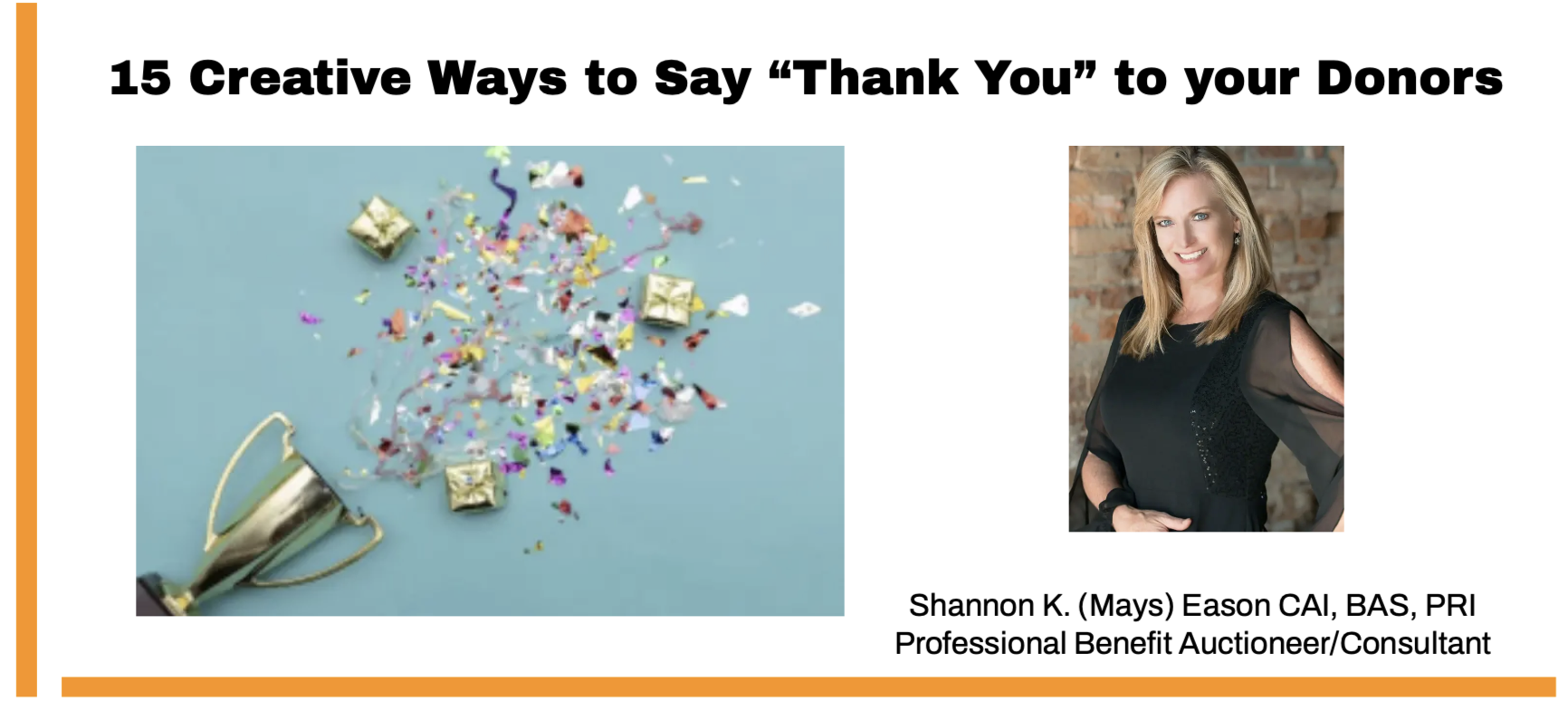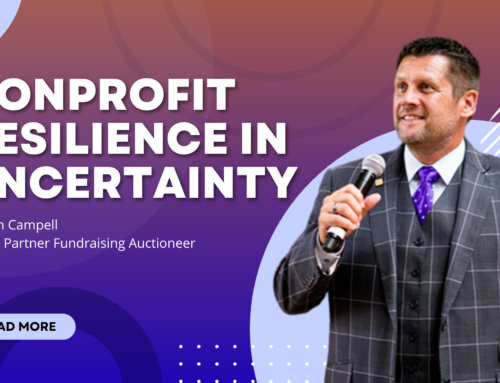- Send a handwritten letter
There’s something special about handwritten notes in the digital era. A handwritten note will really stand out in a mailbox, grabbing the attention of your supporters.
A thoughtful note can be sent out any time of the year and for any occasion: 
- Right after a donation
- For your donor’s birthday
- For Christmas or other relevant religious holiday
- For the New Year
- For your donor’s “giving-versary”
- Any other time of the year to let your donors know you’re thinking of them! Anyone from your organization can write the note, and to go the extra mile — involve your beneficiaries! There will be nothing quite like it when your donors receive a handwritten note by someone their donation helped.
Depending on who your beneficiaries are, you can get extra creative with this. For example, if your nonprofit is an animal shelter, you can include “paw prints” in your handwritten letters!
Pro Tip: The handwritten note can also come from the person your donors are most familiar with (like an employee or a volunteer), for a more personal touch.
- Make the phone call

Phone calls, when done right, can be a great way to thank your donors for their contribution.
You can make the phone call following a donation, on a special holiday, at the end of the year, or at any other time of the year (surprising your donors)!
You can even organize a phone-a-thon, bringing together team members and volunteers to make phone calls and say “thank you” to your donors. You can even turn this into a regular event that you organize weekly or monthly.
Come up with a script your volunteers and team members can follow, but allow space for the calls to be spontaneous and unrehearsed. The calls shouldn’t feel like a mere formality, otherwise they will lose its power with donors.
- Organize an office tour

Invite the donors to tour your offices. This can make your donors feel closer to your organization and make them feel more like they’re part of the team.
As part of the tour, you can organize a casual lunch or coffee with the team at the office. Let the space be informal and casual. As part of the visit, you can also show your donors what happens behind the scenes of making your programs happen.
Naturally, it’s not possible to organize this for all of your donors, so you can organize it for the top tiers. As a way to involve other tiers, you could, for example, organize a virtual tour of your office.
- Highlight donors on social media and website

Highlight donors on your social media pages with a “donor spotlight.” Ask your donor for their permission to do so, and if they agree, ask them for a photograph and a testimonial you can use. Ask them why they decided to give to your nonprofit. In your donor highlight, share why you value the donor’s support.
You can also create a dedicated Donor Spotlight page on your website and share photos and brief descriptions of some of the ways in which donors and volunteers support your work.
Another way to publicly thank your donors is to use Facebook or Instagram video and record a short video highlighting your top supporters and how their gifts are making a difference.
Finally, you can also appreciate your top donors in your annual report.
- Send small gifts

Small and thoughtful gifts can make a big difference.
Send a small gift alongside a personalized “thank you” note. It’s best that the gift is directly linked to your cause and the positive impact your work is having thanks to your donors’ support. For example, you can design a photo booklet with photographs from the field. These photo booklets can include quotes, notes, and statistics. Photo booklets are a very good end-of-year gift, although they can be sent any time of the year.
You can also send framed photographs, coffee mugs, tote bags, candles, hampers, journals, books, and more. You can also try and make the gifts relevant to your
specific mission. For example, if you’re an environmental nonprofit, you could send your nonprofit supporters reusable cutlery or bamboo toothbrushes.
You can also send your donors electronic gift cards. And these don’t have to be super expensive (e.g. you can send a gift card for a cup of coffee).
Bonus points for handmade gifts by those you serve (if relevant)!
Pro tip: Gifts are a touchy subject in the nonprofit world because some believe them to be taking away from the money that could be spent directly on programs. If you’re sending gifts like tote bags or coffee mugs, explain to your donors that the publicity you get by them using these gifts contributes to more donations!
Companies like Swag.com are great places for branded items to send.
- Send a welcome package

First impressions matter. For many donors, how their gift is acknowledged has a direct effect on if, when, and how they donate again.
To really start off the relationship with your donors on the right foot, consider sending them a welcome package. Now, a physical package might not be feasible for all organizations — but every organization can make an effort to welcome their donors once they become a supporter.
You can include many different items in your welcome package. You can start with a welcome photo and photos from the field featuring your beneficiaries, as well as an impact story. If you have a larger budget or are sending this to a major donor, you might add in a small gift and send this via snail mail. If your budget is lower, you can send this via-email.
It’s important that a welcome package, if you’re sending it, is sent right after the first donation is made, acknowledging your donor’s gift and creating a positive donation experience for them.
Try to personalize the welcome package as much as possible, referencing the project, program, or community that the donation is supporting. Include a simple call to action, such as inviting the donor to tell a friend about your organization.
Pro tip: Keep your donation receipts separate from your “thank you” letters and welcome packages. You can still add a “thank you” to your donation receipt, but you should also send a separate “thank you” letter or a welcome package.
- Send birthday/anniversary cards

Pay special attention to the big milestones: birthdays, weddings, promotions, anniversaries and honor your donors on these special days.
Send them an email, call them, or send them a token of appreciation.
This communicates to your donors you care about them and pay attention. And if this seems cumbersome or downright impossible, you might not be managing your data well.
With a well-organized donor database, such a process won’t be overwhelming. If you don’t have one, now is the time to start investing in a good donor management system that will enable you to communicate with your donors in a timely, authentic, and meaningful way.
- Send a “thank you” video
Videos are “it” nowadays! They help relay the atmosphere in a way that written words or a phone call simply can’t. And you don’t need fancy equipment to create good videos. All you need is a good smartphone, some good lighting, and you’ll be good to go!
Start the video by mentioning the donor by name and mention something specific about this donor. The donor should ideally notice that you made the video just for them! These videos don’t have to be too long, two to three minutes is sufficient to relay the message.
Of course, depending on the size of your nonprofit, it’s probably not realistic to create a video for every single donor. In case you have many donors, you could create dedicated videos just for your major donors. You could create a more generic video for other donors that you could send to them in your nonprofit e-newsletter.
Keep the “thank you” video short and prepare the main talking points beforehand. Be sincere and authentic — that matters more than top notch production in these videos. It’s important they feel “human” and not overly polished.
- Meet the team

Here’s a short and sweet, yet effective idea to say “thank you” to your donors!
Whenever you can bring more authentic human connection to your relationship with donors, do so.
Organizing a get together where your donors can meet your team. This can be anything — from a fancy gala night to a coffee and tea gathering, a picnic, an informal lunch, and more.
What matters is that you organize the type of gathering your donors would enjoy, and that you make it all about the community!
- Ask for input

Although this doesn’t seem like a “thank you”, it really is! Your donors will feel valued and appreciated when you ask for their opinion and acknowledge their input.
Send out a survey gauging your supporters’ opinions and suggestions, and once you receive them, don’t forget to somehow act upon them.
You can also organize an open discussion and invite your major donors to contribute their opinions and/or ask any questions they might have about your work.
If your major donors aren’t in the same geographic area, you can organize the discussion on Zoom. You can even open one Board meeting per year for your major donors to attend. This will give them a larger perspective on your operations and make them feel valued and appreciated.
- “Come-Along”
A great way to thank your donors and show them the impact their donations are having is to invite them to come along to one of your program locations.
Remember, people give to people, not organizations.
Let your donors meet your beneficiaries. Take them to that animal shelter, that forest reserve, or that school. Let them experience first hand the problem you’re trying to solve. Discuss your successes and challenges with them. Introduce them to everyone as a friend, as a member of your team. This is how you create life-long supporters!
Let your donors see the reality of your program locations, you don’t need to change them up for their arrival. The more authentic, the better.
Pro tip: If you can’t do a physical tour of the location, invite your donors to a virtual tour.
- Donor appreciation wall

Social media appreciation posts and website highlights are wonderful ways to appreciate your donors, but there’s another way to thank your donors!
Create a donor appreciation wall at a physical location, such as your office (or school, hospital, museum etc.)
These can be engraved bricks, donor appreciation trees, pavestones, or any other host of creative ways to have your donors’ names visible.
- Host a donor appreciation event

Organize an event for the sole purpose of recognizing and acknowledging your donors.
This can be as formal or as informal as you like, and as big or as small as you like, but organizing an event to celebrate the support of your donors can do wonders for your relationship with your donors.
Make sure you don’t ask for more donations during this event, but simply demonstrate gratitude for your donors’ continued support and all it helps you achieve.
Highlight the impact your organization is having thanks to their donations. Show videos, photos, and invite beneficiaries to share their stories.
- “Inside access”
Another creative way to thank your donors is to offer them “inside access” to your nonprofit’s activities. What that inside access will look like will depend on what you do.
For example, if you’re a theater, you can send your donors a recording of a virtual performance done just for them. An art gallery could offer its donors early access to an exhibition. And most nonprofits can invite donors a chance to a virtual talk by an expert in a theme related to their work.
- Annual donor awards
Here’s a creative idea for thanking your donors with lots of potential! Every year, maybe at the end of the year, give your donors awards.
You can give more classic awards such as “Donor of the Year” or “New Donor of the Year” or think of more creative names that relate to your nonprofit’s mission. For example, if you’re a wildlife conservatory, you might name the awards “The Elephant Award” or “The Tiger Award” and then describe these awards with a sentence or two.
You can pair the award with a plaque or a trophy, but it also doesn’t have to be expensive if you don’t have the budget.
You can hold an awards ceremony or send awards via mail.
Ready to make your donors feel like heroes?
There’s a lot that goes into successful fundraising, but most would agree good donor relationships are at the center of it.
Using any one or a combination of these ideas will lead to better relationships with your nonprofit community and will help you go above and beyond to express gratitude to your donors.
Donors want to feel seen, valued, appreciated and acknowledged. And they want to feel like their gifts are making a difference to the mission they care about.
The key lies in making your donors feel like more than just wallets. It’s crucial to make your donors feel like the heroes of your organization, like part of the team.
Saying “thank you” to your donors frequently and consistently strengthens your relationship with them and provides everyone involved the energy and the drive needed to continue working together toward your common vision.
For more information on gratitude plans, check our resource library! Happy Gala Season!






